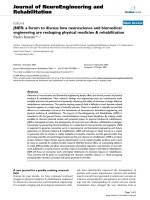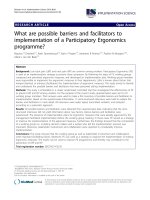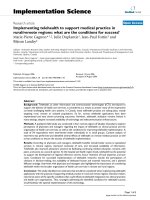What Are Vietnamese Comparative Advantages To Chinese How Do We Trade “Win-Win” With Chinese.pdf
Bạn đang xem bản rút gọn của tài liệu. Xem và tải ngay bản đầy đủ của tài liệu tại đây (2.02 MB, 14 trang )
<span class="text_page_counter">Trang 1</span><div class="page_container" data-page="1">
GROUP ASSIGNMENT ECO201_IB1808_FA2023
4 Vu Hoang Truc Quynh SS170122
</div><span class="text_page_counter">Trang 2</span><div class="page_container" data-page="2">1. Comparative advantage of vietnam's rice exports………72. Comparative advantage of vietnam's steel imports………..……8
IV. INFLUENCING
V. WHAT CAN VIETNAM DO TO INCREASE RICE EXPORTS?
1. Government support………...102. Promote vietnamese rice to international friends………..…….103. Improved transportation……….……10VI. WHAT CAN VIETNAM DO TO DECREASE IMPORT STEEL?…11VII. HOW TO INCREASE EXPORTS AND REDUCE IMPORTS?
1.Exploiting steel export sales from china to vietnam………..….…122. Reduce rice imports from vietnam to china………..….…12
VIII. REFERENCE:………....13
</div><span class="text_page_counter">Trang 3</span><div class="page_container" data-page="3">I. VIETNAM EXPORT RICE TO CHINA.
Many businesses continuously negotiate new export contracts. According to the GeneralDepartment of Customs, the average price of rice exported to China in the first 3 months ofthe year reached 589 USD/1 ton, an increase of more than 18% over the same period last year.China is also the market with the average price of rice. This item is the highest amongVietnam's three largest export markets.
The reason is said to be that China has announced to reopen imports. In addition, thecountry is also in need of new alternative sources of supply for low-grade rice as rawmaterials for animal feed.
Assessing the potential for exporting rice to the Chinese market in the coming time, manybusinesses believe that China will continue to be a potential market. The reason is that theprolonged drought caused the country's 2021 - 2022 crop production to decrease by 2%.
Therefore, China is expected to increase rice imports by 6 million tons in the 2022 - 2023crop year. In a recent report, Fitch Solutions said the global rice market will record the largestshortage in two decades. in 2023. Fitch Solutions is a macro research unit and an affiliatedcompany of the global credit rating agency Fitch Ratings.
Accordingly, the report forecasts that in the 2022 - 2023 crop year, there will be a globalshortage of 8.7 million tons of rice, the largest deficit since the 2003 - 2004 crop year. This isa great opportunity for Vietnam's rice exports. next time.
According to data from Chinese Customs, in the first 4 months of this year the countryimported 1.36 million tons of rice worth 704 million USD, down nearly 40% in volume and26.5% in value compared to the same period last year. period last year.
In particular, China reduced rice imports from some main markets such as India (-75.8%),Pakistan (-79.7%) and Thailand (-44.1%)
However, rice imports from Vietnam increased sharply by 93.2% in volume and 116% invalue over the same period last year, reaching 445,237 tons with a value of 260 million USD.With this result, Vietnam has risen to become the largest rice exporter to China in the first 4months of 2023, far ahead of other markets such as Myanmar, India or Thailand.
</div><span class="text_page_counter">Trang 4</span><div class="page_container" data-page="4">Data from the General Department of Vietnam Customs shows that China is currently ourcountry's second largest rice export market after the Philippines. Vietnam's rice exports tothis market in the first 4 months of this year reached 507,066 tons, the highest in the last 5years and accounting for 17.5% of the country's total rice export volume.
Vietnam's rice exports to China have rebounded since the beginning of this year after thecountry lifted strict disease control measures and reopened the economy after nearly 3 yearsof anti-epidemic closure. COVID.
At the Conference to evaluate rice exports in 2022 and forecast rice exports in 2023taking place in February this year, Mr. Phan Van Chinh, Director of the Import-ExportDepartment (Ministry of Industry and Trade) said that China is opening its market. The returnof the market is a positive signal for rice export businesses thanks to the ability to absorbgoods when there are large contracts.
</div><span class="text_page_counter">Trang 5</span><div class="page_container" data-page="5">"With China opening its market after the COVID-19 epidemic, it is forecast that importdemand will return as usual. Along with that, the quality of Vietnam's exported rice isincreasingly improving, and other countries are There is a need to import from Vietnam," saida representative of the Import-Export Department.
Regarding demand, currently sticky rice and fragrant rice such as ST21, ST24, DT8... arestill the most exported types to the Chinese market.
In the first 4 months of the year, sticky rice accounted for more than 48% of Vietnam'stotal rice export volume to China with more than 244 thousand tons, an increase of 90.3%over the same period last year. Next was fragrant rice with 191.4 thousand tons, an increaseof 49.3% and accounting for 37.8% of the proportion.
The volume of white rice exported to China also increased by 86.3% to 70 thousand tons.In addition, businesses also export Japanese rice varieties, brown rice, and micronutrient riceto China, but the volume is not much, only about 500 - 675 tons.
The price of rice exported to China has also increased quite sharply in recent times withsticky rice increasing by 20.8% to an average of 536 USD/ton; white rice increased by 25%,reaching 555 USD/ton; Fragrant rice increased by 1.8%, reaching 637 USD/ton.
The leading rice exporting enterprises to the Chinese market in the first 4 months of theyear can be mentioned as: Duong Vu Company Limited, Tan Dong Tien Joint StockCompany, INTIMEX Group Joint Stock Company, Tan Company Limited Thanh An, KienGiang Trading Joint Stock Company…
</div><span class="text_page_counter">Trang 6</span><div class="page_container" data-page="6">II. VIETNAM IMPORTS STEEL FROM CHINA.
1. Vietnam imports steel from china.China exported 66.8 million tons of steel globally in the first 9 months of 2023, anincrease of 31.8% over the same period in 2022. Meanwhile, steel imports decreased to 5.698million tons, a decrease of 31. 7% due to low domestic demand. Facing the crisis in the realestate market, which is said to be an important market affecting the steel production industryin China, causing the Chinese economy to be negatively affected, alarming the financialsystem. in this country. The weakening of the Chinese economy also means reduced demandfor many products, including steel.
Therefore, exporting is considered a solution to the problem of increasing inventory asproduction increases. According to the China Steel Association (CISA), the country's crudesteel production in the first eight months of 2023 reached 712.9 million tons, up 2.6% overthe same period in 2022, while finished steel products of all kinds reached 626,000 tons. 5million tons, an increase of 2.5%. In the last week of September, the level of blast furnacecapacity mobilization of 247 Chinese steel factories reached a maximum of 93.08%.
Overall situation, the Chinese government and local authorities at all levels continuouslyapply measures to stimulate and create a favorable export environment for all products,including steel. In addition to the advantages of large-scale production, low costs and pricesupport policies, the decline of China's renminbi against the US dollar makes it difficult tomaintain competitiveness for China's steel exports. China in the coming stages.
Chinese steel is mainly exported to regions with few trade barriers, such as SoutheastAsia, South Asia, the Middle East and Central America. Among these, the Vietnamesemarket has many advantages, including close geographical location and reducedtransportation costs compared to other markets. In addition, Vietnam has removed trade
</div><span class="text_page_counter">Trang 7</span><div class="page_container" data-page="7">protection measures for many steel products, including galvanized steel, colored steel, steelpipes and high-strength steel, thereby enhancing the market's attractiveness. This market isfor Chinese steel exports.
2. Why does the steel industry in vietnam also have great potential but chinacan still penetrate it?
In Vietnam, businesses such as Hoa Phat, Hoa Sen Steel Sheet, Dong A Steel Sheet...produce a variety of products from construction steel, hot rolled steel coils, cold rolled steelsheets, galvanized steel sheets... to meet the needs of the industry. countries and exported toAmerica, Europe, Canada, Japan, and Korea. Vietnam's steel industry production capacity isaround 29 - 30 million tons/year, exceeding domestic demand.
According to the Vietnam Steel Association (VSA), in the first five months of 2023,finished steel production of enterprises in the association reached 11 million tons, down21.8% over the same period last year. However, Chinese steel imported into Vietnam stillincreased very strongly, according to VSA, reaching more than 2.65 million tons, accountingfor more than 52% of total imported steel output.
The problem is that according to Vietnam's regulations, steel is not included in group 2items that cause unsafety, so there is no requirement to declare conformity or inspectimported products and goods. Most imported steel enjoys a tax rate of 0%, while Vietnamesesteel exported to many countries is subject to very high taxes.
Furthermore, trade defense measures such as steel billet self-defense have been removed,other steel products such as galvanized steel sheets, color steel sheets, hot rolled steel coils(HRC), steel pipes, prestressed steel... are not subject to any trade remedy measures.
A large enterprise in the steel industry emphasized that Vietnamese steel exported toother countries must have product certificates according to each country's own standards,which are quite strict. Meanwhile, Vietnam still accepts standards compiled and published bybusinesses themselves.
III. COMPARATIVE ADVANTAGE
1. Comparative advantage of Vietnam's rice exports.
Vietnam is an agricultural country, with the second largest rice growing area in the world.Our country has favorable natural conditions for rice production, with a humid tropical
</div><span class="text_page_counter">Trang 8</span><div class="page_container" data-page="8">The country's rice land fund in the next 5 years is stable at 4 million hectares, the plantedarea tends to be stable at above and below 7.3 million hectares/year and the trend is graduallydecreasing.
+ Technical factors for rice cultivation: 100% of rice land is irrigated, of which the rate ofirrigated rice land is stable at over 60%.
+ Domestic fertilizer production is gradually increasing because Phu My fertilizer factorieshave come into operation, and soon the Ca Mau gas - electricity - fertilizer project will comeinto operation along with phosphate fertilizer factories, Superphosphate increases capacity toensure stable domestic supply.
+ Widely apply scientific and technical advances, especially new varieties, to production toimplement rice intensive farming measures to increase productivity and quality.
In recent years, Vietnam's rice exports to China have maintained a stable growth rate. In2022, Vietnam's rice export turnover to China will reach 1.5 billion USD, an increase of 22%compared to 2021.
According to a report from the General Department of Customs, by the end of September2023, the country exported nearly 6.42 million tons of rice, reaching a turnover of 3.54billion USD, an average value of 551.5 USD/ton, an increase of 19%. 5% in volume (up35.9%) and an increase of 13.7% in average value compared to the same period in 2022.
Specifically, in the first 9 months of 2023, China accounts for 13.3% of the total volumeand accounting for 14% of the total turnover, reaching 858,848 tons (equivalent to 495.78million USD), reaching an average price of 577.3 USD/ton, a sharp increase of 37.2% involume and a 55.2% increase in turnover. Prices increased by 13.1% compared to the first 9months of 2022.
2. Comparative advantage of Vietnam's steel imports.
China is a leading steel producer in the world, with crude steel output accounting forabout one-fifth of global crude steel output. Chinese steel has competitive prices due to lowproduction costs and large production scale.
Vietnam is a developing country, the demand for steel for construction, industry and otherfields is increasing. However, Vietnam's steel production capacity still cannot meet domesticdemand. Therefore, Vietnam still has to import a large amount of steel from countries,including China.
In recent years, Vietnam's steel imports from China have maintained a stable growth rate.In 2022, Vietnam's steel import turnover from China will reach 15.2 billion USD, an increaseof 13% compared to 2021.
</div><span class="text_page_counter">Trang 9</span><div class="page_container" data-page="9">In the report of the General Department of Vietnam Customs on the steel import situationin 2022, it is clearly stated that Vietnam imports steel mainly from China, Korea, and Japan.This is because these countries are geographically close to Vietnam, helping to reducetransportation costs, thereby reducing the price of imported steel.
According to statistics from the General Department of Customs, in September 2023,Vietnam imported 1.4 million tons of iron and steel worth 996 million USD, an increase of9.1% in volume and 6.3% in value respectively. price compared to August 2023. Comparedto the same period last year, volume and value increased by 89% and 40%, respectively. Inthe first 9 months of 2023, Vietnam imported iron and steel mainly from the Chinese andJapanese markets. Of which, 5.5 million tons of iron and steel were imported from Chinawith a turnover of 3.88 billion USD, up 38% in volume but down 4.1% in value over thesame period last year. The volume and value of iron and steel imports from China account for59% and 51% of Vietnam's total imports, respectively.
IV. INFLUENCING AGENTS
However, these two comparative advantages can also be affected by a number of factorssuch as:
+ Natural factors: Climate change may affect rice production in Vietnam, leading toreduced rice output and prices.
+ Economic factors: The development of the steel industry in Vietnam may reduce theneed to import steel from China.
+ Political factors: Trade policies between Vietnam and China may change, affectingimport and export between the two countries.
These factors may change over time, affecting rice exports and steel imports betweenVietnam and China as follows:
+ Natural factors: Climate change may cause rice production in Vietnam to decrease,leading to a decrease in rice exports to China. Natural disasters and epidemics can also affectsteel production in both countries.
+ Economic factors: China's economic development may increase the demand for riceimports from Vietnam. However, if inflation in China increases, it could reduce the value ofthe yuan, making Vietnamese rice more expensive, affecting exports.
+ Political factors: If trade policies between Vietnam and China change, it may affectimport and export between the two countries. For example, if Vietnam and China sign a FreeTrade Agreement (FTA), it could lead to reduced tariffs, boosting the two countries' rice andsteel exports.
</div><span class="text_page_counter">Trang 10</span><div class="page_container" data-page="10">production to decrease by 2.5% compared to 2021. This has led to a decrease in exports.export rice to China, Vietnam's largest rice import market
+ Economic factors: China's economic development in recent years has boosted thecountry's need to import rice and steel. China's economic development in recent years hasboosted the country's demand for rice and steel imports. China is one of the world's largesteconomies, with a large population and rising per capita income. This has led to an increasein consumer demand for essential commodities such as rice and steel.
+ Political factors: The Bilateral Trade Agreement between Vietnam and China (BTA)signed in 2008 has contributed to promoting Vietnam's rice and steel exports to China.This agreement eliminated tariffs on many Vietnamese exports to China, including rice andsteel. This has helped reduce the cost of these items when imported into China, therebypromoting Vietnam's exports.
In general, the two comparative advantages of rice export and steel import betweenVietnam and China have remained sustainable in recent years. However, Vietnamesebusinesses need to pay attention to monitoring the factors affecting this comparativeadvantage to have appropriate business plans.
V. WHAT CAN VIETNAM DO TO INCREASE RICE EXPORTS?
1. Government support.To increase Vietnamese rice exports to China, the Government has implemented manytrade promotion policies and programs. The Ministry of Industry and Trade organizes tradeevents between the two countries, and Vietnam focuses on Chinese provinces to meet localneeds.
Besides, Vietnam also promotes the image of high-quality Vietnamese rice andcooperates directly with large Chinese corporations and Vietnamese rice retailers. Topromote rice imports, the Ministry of Foreign Affairs and the China Food Association havecreated a special program. Chinese traders were invited to visit Vietnam's main rice growingareas and get acquainted with the quality of Vietnamese rice. As a result, the two companiessigned a contract to export 84,000 tons/year.
2. Promote Vietnamese rice to international friends.
Similar to the recent 6th International Rice Congress taking place in Manila (Philippines),the Minister acknowledged that "there is no reason for a rice power like Vietnam not to dareto express itself" and The 2023 International Rice Industry Festival opens an opportunity forVietnam to introduce its potential, production strengths as well as the quality of its homelandrice grains.
</div>








